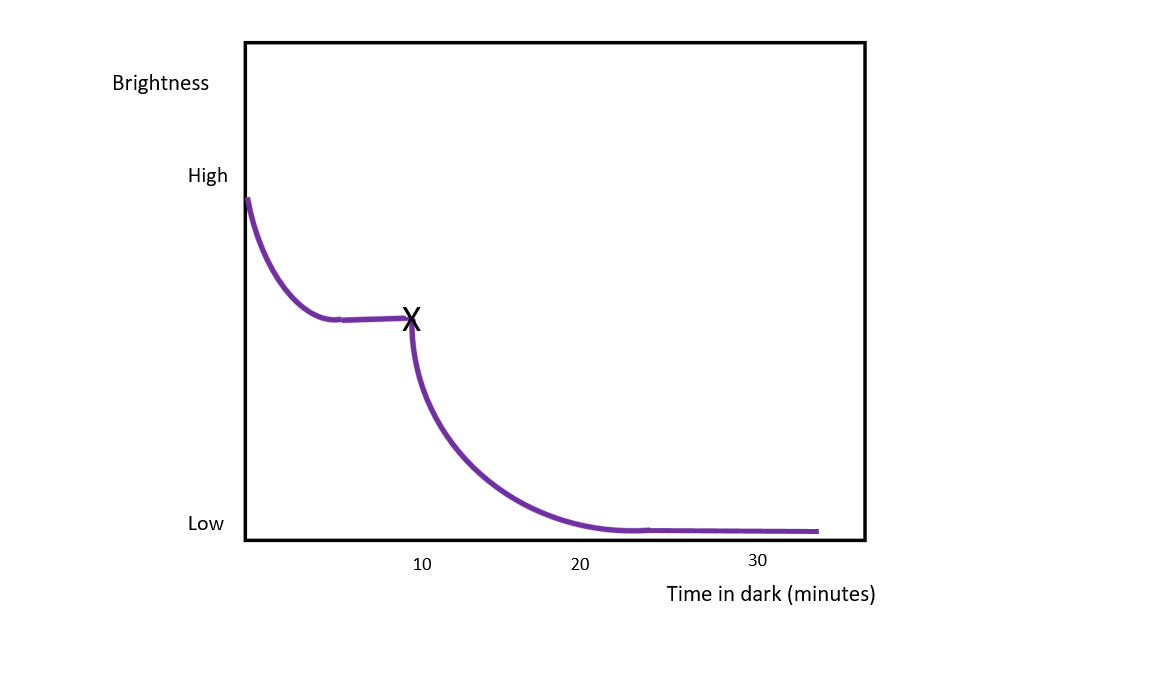Chapter 2: Light and the Eye
2.4 Dark Adaptation
As we saw in the prior module, after absorbing light, all-trans retinal needs to be turned back into 11-cis retinal for it to be reused. The time that it takes to recycle the retinal pigments is longer for rods than it is for cones. Dark adaptation refers to the ability of both rod (scotopic) and cone (photopic) mechanisms to recover sensitivity in the dark following exposure to bright lights. We have all experienced dark adaptation (even if you didn’t know this term before now). Imagine going into a dark movie theater, at first we can’t see much, but over time, things around us become easier to see. Let’s imagine now that you are a participant in a psychophysical dark adaptation study (see Figure 2.8). First, you will sit in a dark room and look at a small cross in the side of the center of the screen. Then you will see a bright light on the side of the screen designed to “bleach” the photoreceptor pigments in a small peripheral area of the retina that contains rods and cones. After about 30 seconds, the experimenter will place a small very dim light in the same spot and will increase the brightness of light to measure your absolute threshold, i.e., the smallest amount of light needed to just be able to see it. As you can see from Figure 2.8, the longer we sit in the dark, the less bright the light needs to be. The dark-adaptation curve seems to consist of two major parts after 5-10 minutes, the cone pigments have recycled and the curve seems to flatten out. This point (X) is generally referred to as the cone-rod break. However, if we continue to sit in the dark, the rod pigment (rhodopsin) starts to regenerate and we see a further drop in our absolute threshold. After 30 minutes, nearly all the rhodopsin has been replenished and there is little change in the absolute threshold.

OpenStax, Anatomy and Physiology Chapter 14.1 Sensory Perception
Provided by: Rice University.
Access for free at https://openstax.org/books/anatomy-and-physiology/pages/14-1-sensory-perception
License: CC-BY 4.0Cheryl Olman PSY 3031 Detailed Outline
Provided by: University of Minnesota
Download for free at http://vision.psych.umn.edu/users/caolman/courses/PSY3031/
License of original source: CC Attribution 4.0
Adapted by: Faith SanchezWebvision: The Organization of the Retina and Visual System, Light and Dark Adaption by Michael Kalloniatis and Charles Luuz
URL: https://webvision.med.utah.edu/book/part-viii-psychophysics-of-vision/light-and-dark-adaptation/
License: CC BY-NC
Adapted by: Savannah Whisenhunt
